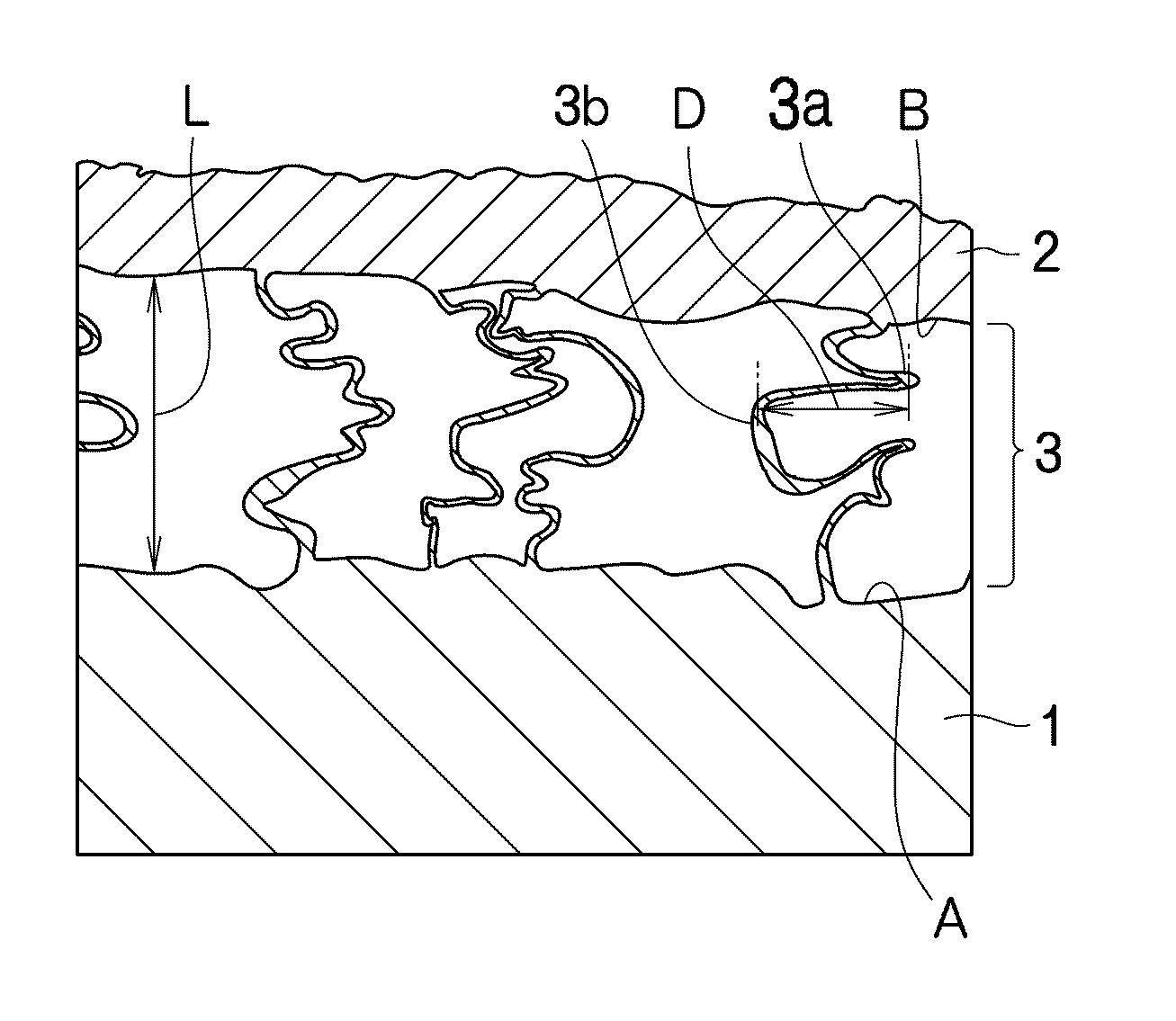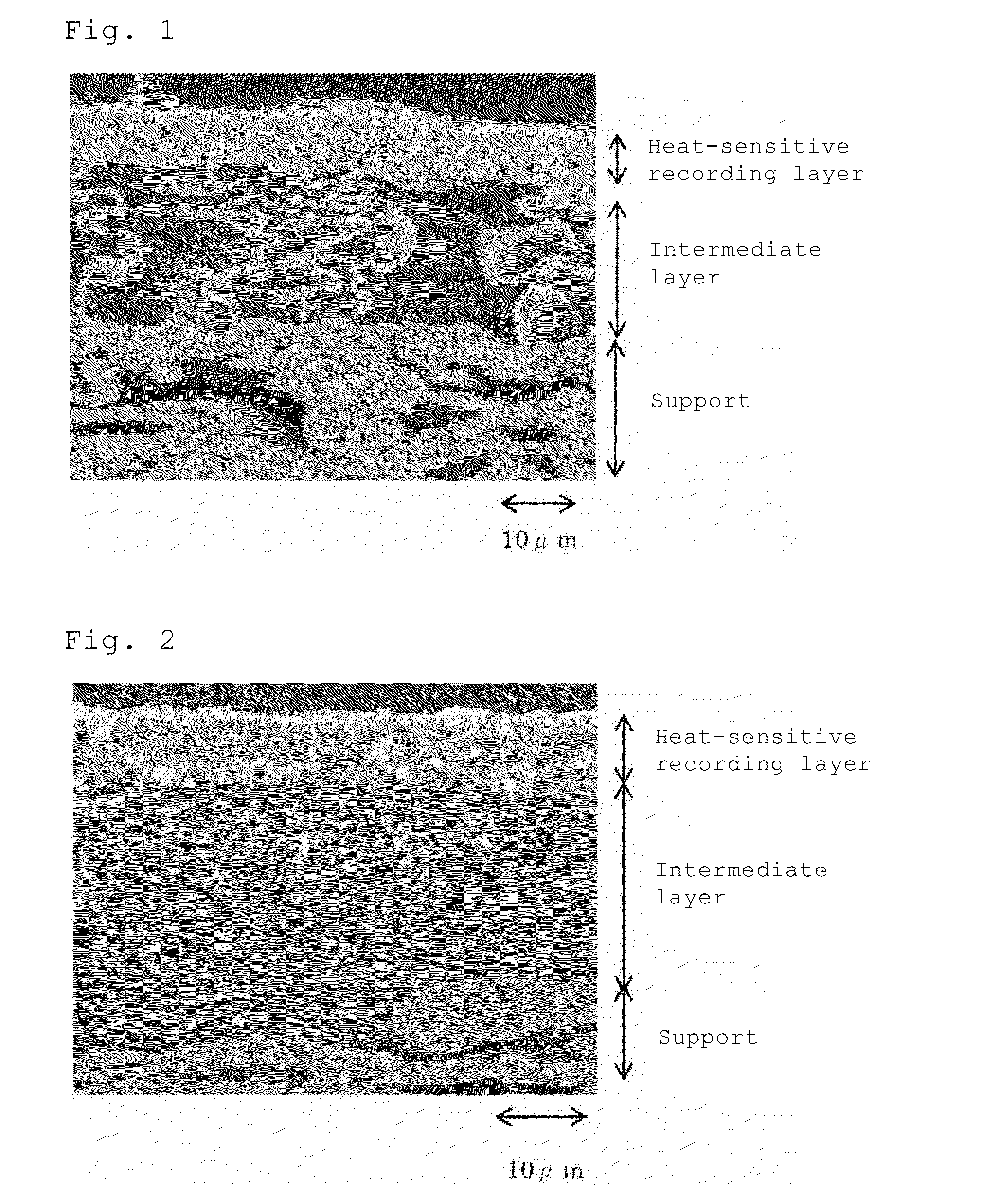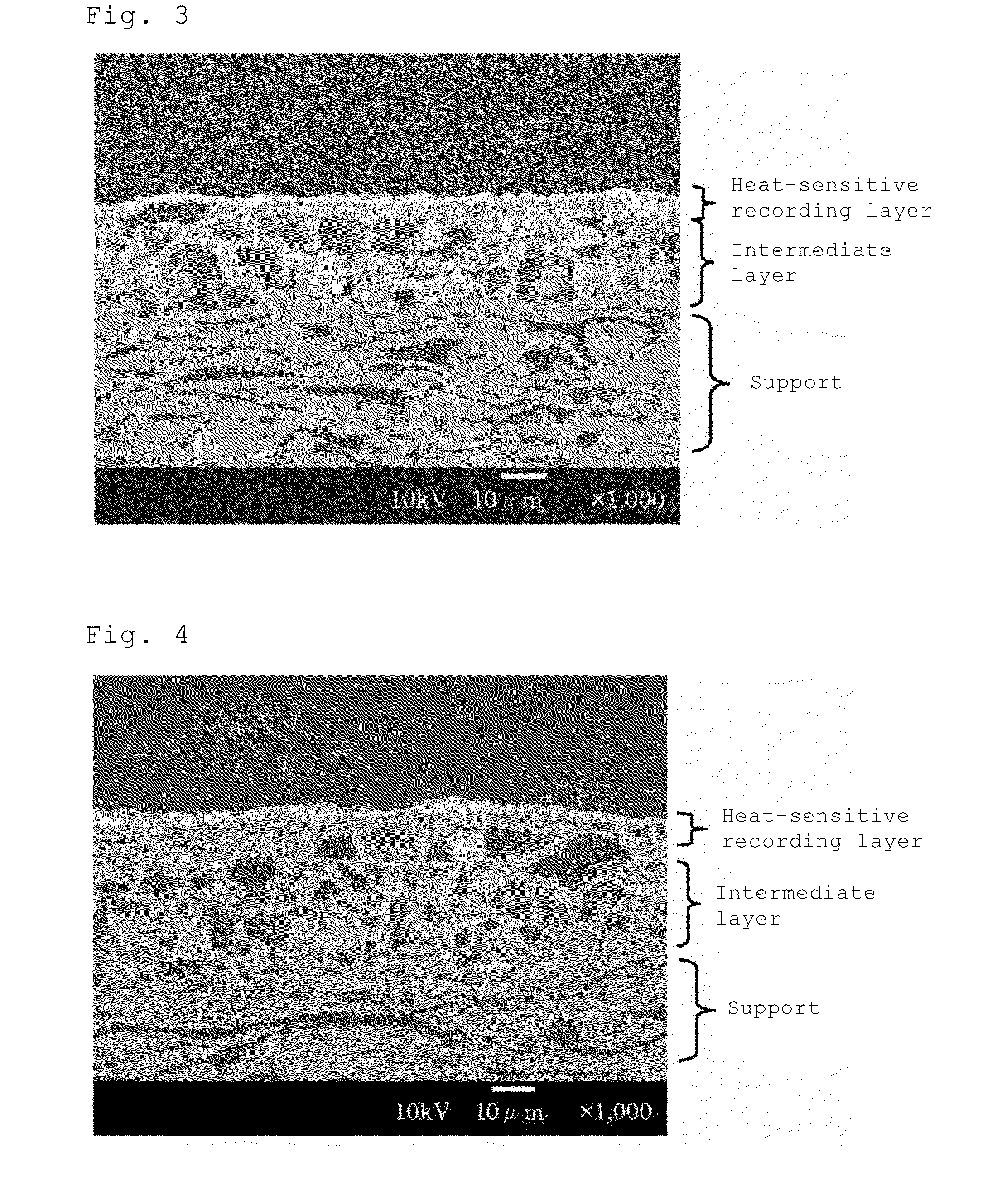Thermal recording material and method for producing the same
a technology of thermal recording material and recording halftone image, which is applied in the direction of thermal imaging, ceramic layered products, coatings, etc., can solve the problems of unsatisfactory improvement effects, and achieve excellent thermal responsiveness and particularly in the quality of recorded halftone images
- Summary
- Abstract
- Description
- Claims
- Application Information
AI Technical Summary
Benefits of technology
Problems solved by technology
Method used
Image
Examples
example 1
(1) Preparation of Support Having Intermediate Layer
[0098]First, 100 parts of a heat-expandable resin particle, Expancel 053-40DU (manufactured by AkzoNovel, average particle diameter before thermal expansion: 10 to 16 μm, expansion starting temperature: 96 to 103° C., expansion ratio: about 50 fold) was dispersed in 200 parts of a 10% aqueous polyvinyl alcohol solution. To a high-quality paper having a density of 0.8 g / cm3 and a basis weight of 120 g / m2, which had not been subjected to soft calendering, the prepared dispersion was applied so that the solid coating amount might be 10 g / m2. Next, drying was performed while the temperature of the coated paper surface was kept no higher than 80° C. Then, thermoforming was performed using a 3-roll thermal calender having two nips formed by three vertically stacked rolls with a diameter of 500 mm. The conditions were as follows: the linear pressure was 500 N / cm, the processing temperature was 150° C., the processing speed was 40 m / min, a...
example 2
[0105]The same procedures as described in Example 1 were performed to give a thermal recording material, except for using 100 parts of a heat-expandable resin particle, Expancel 461-20DU (manufactured by AkzoNovel, average particle diameter before thermal expansion: 6 to 9 μm, expansion starting temperature: 100 to 106° C., expansion ratio: about 35 fold) instead of 100 parts of the heat-expandable resin particle Expancel 053-40DU in the preparation of a support having an intermediate layer.
example 3
[0106]The same procedures as described in Example 1 were performed to give a thermal recording material, except that the thermoforming was performed under the following conditions: the linear pressure was 1000 N / cm, the processing speed was 20 m / min, and the contact time of the coating surface and the thermal roll was about 2 seconds in the preparation of a support having an intermediate layer.
PUM
| Property | Measurement | Unit |
|---|---|---|
| roughness | aaaaa | aaaaa |
| roughness | aaaaa | aaaaa |
| roughness | aaaaa | aaaaa |
Abstract
Description
Claims
Application Information
 Login to View More
Login to View More - R&D
- Intellectual Property
- Life Sciences
- Materials
- Tech Scout
- Unparalleled Data Quality
- Higher Quality Content
- 60% Fewer Hallucinations
Browse by: Latest US Patents, China's latest patents, Technical Efficacy Thesaurus, Application Domain, Technology Topic, Popular Technical Reports.
© 2025 PatSnap. All rights reserved.Legal|Privacy policy|Modern Slavery Act Transparency Statement|Sitemap|About US| Contact US: help@patsnap.com



